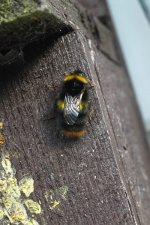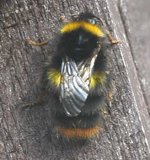Noticed a couple of weeks ago that we have a species of Bumble Bee nesting in our Blue Tit nestbox. I was going to try and build a proper B Bee nest to encourage them into the garden but no need.
One question, after they have left should I clear everything out of the nestbox, not bothered about getting Blue Tits in it, they've not used it in 6 years !!!, but I'd like the Bees to re-use it.
One question, after they have left should I clear everything out of the nestbox, not bothered about getting Blue Tits in it, they've not used it in 6 years !!!, but I'd like the Bees to re-use it.





